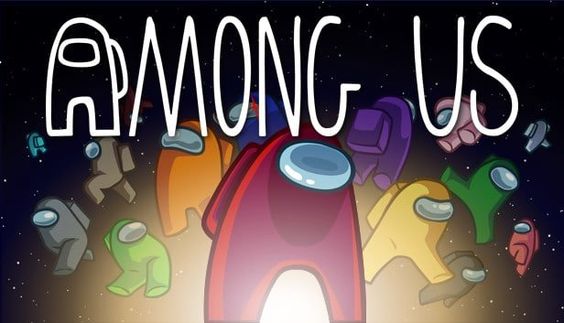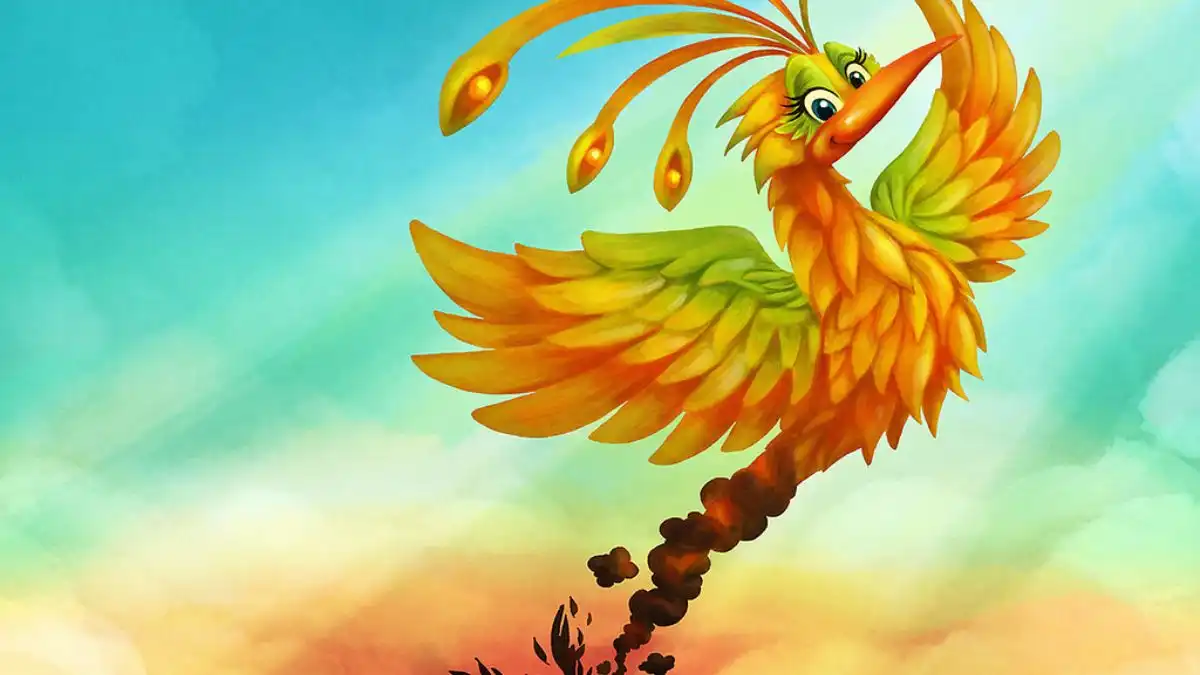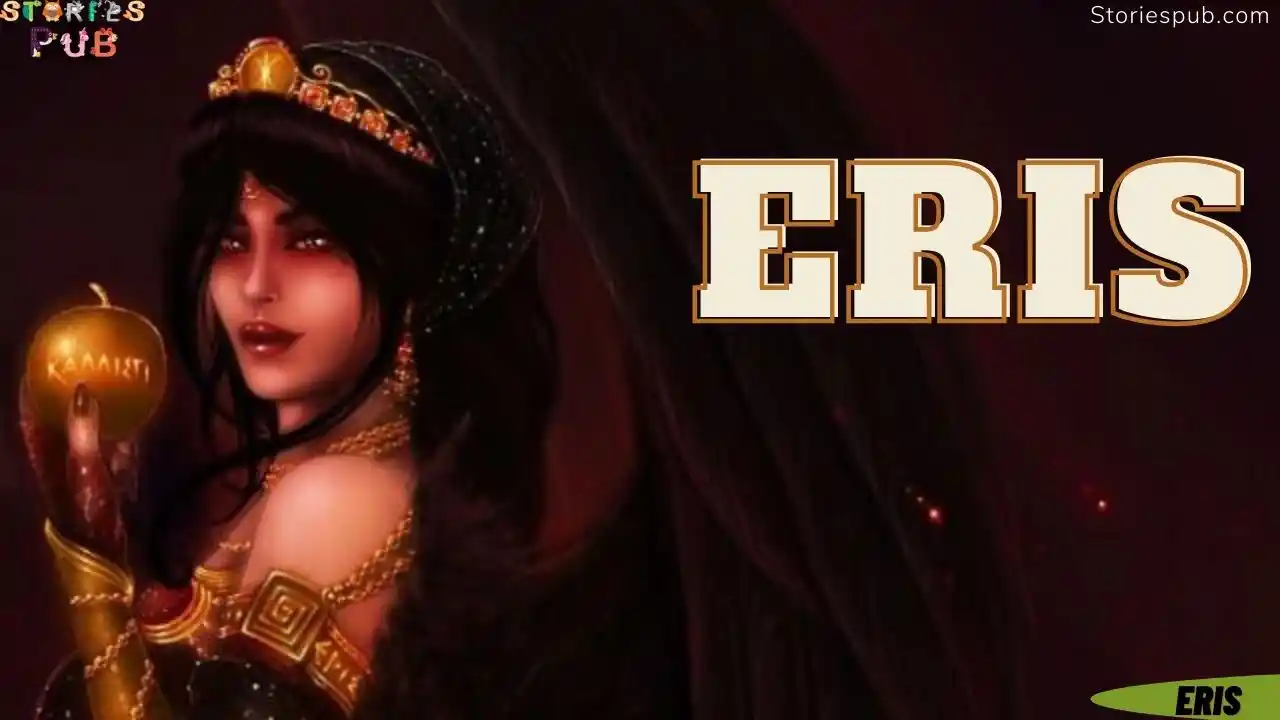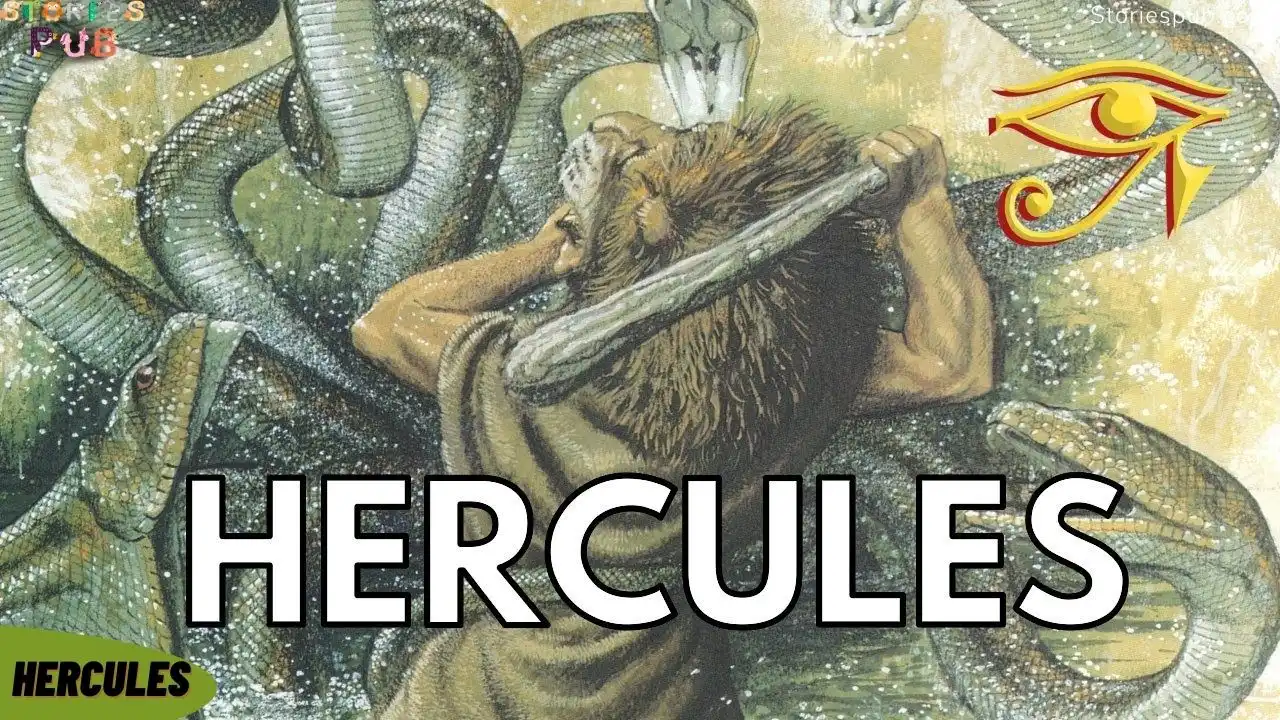Phoenix Bird Mythological Stories With Power, Weakness, And Symbol
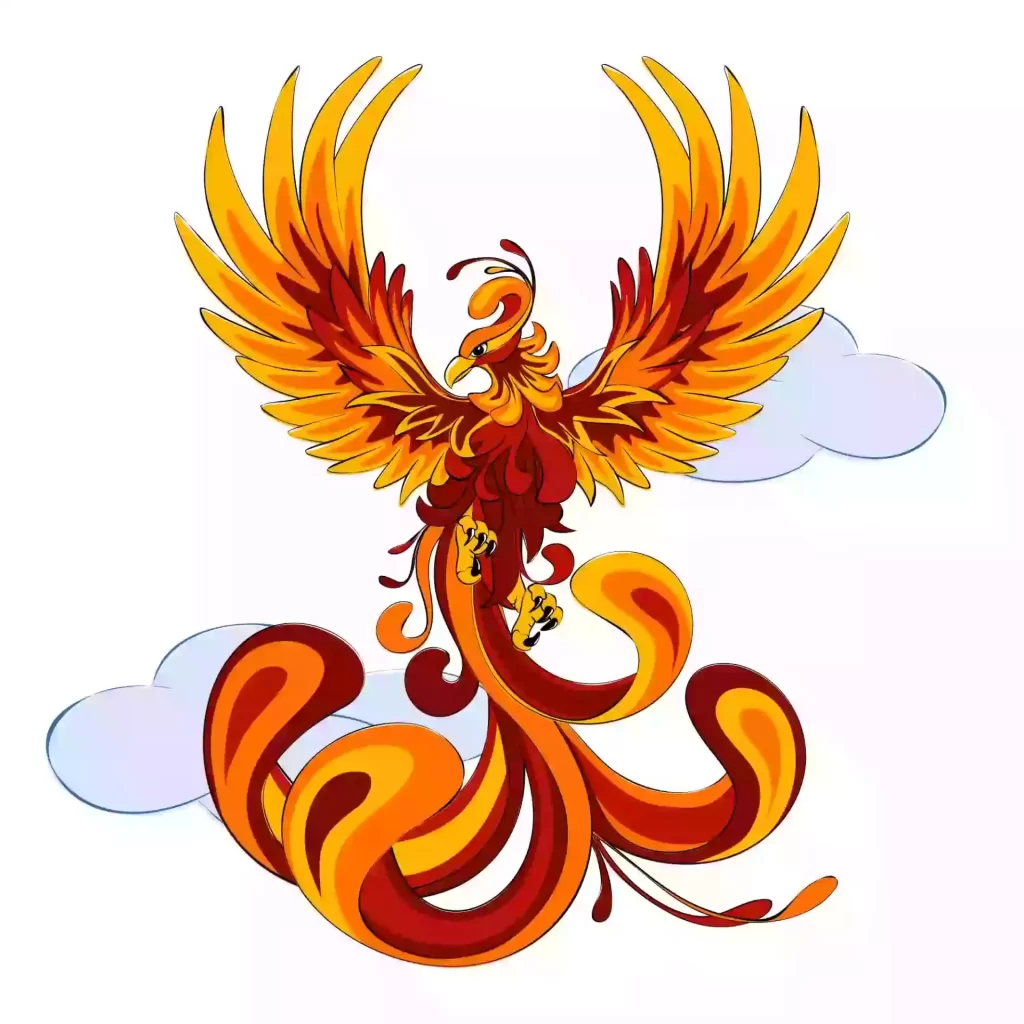
Many ancient cultures have been captivated by the mystique of the phoenix bird. This mythical creature, with its fiery plumage and majestic presence, has long been steeped in symbolism and myth that evokes notions of rebirth, immortality, and the eternal flame. Stepping into the realms of folklore and legends, the phoenix has touched the hearts and minds of people across different cultures and generations.
Key Takeaways:
- The phoenix bird symbolizes rebirth, renewal, and immortality.
- Its mythological attributes include healing and the eternal fire.
- The phoenix is not a real species but is inspired by various historical birds.
- The name “phoenix” likely originated from the ancient Mediterranean people called the Phoenicians.
Asian cultures have their own mythical birds similar to the phoenix, such as the Fèng Huáng and Hō-ō.
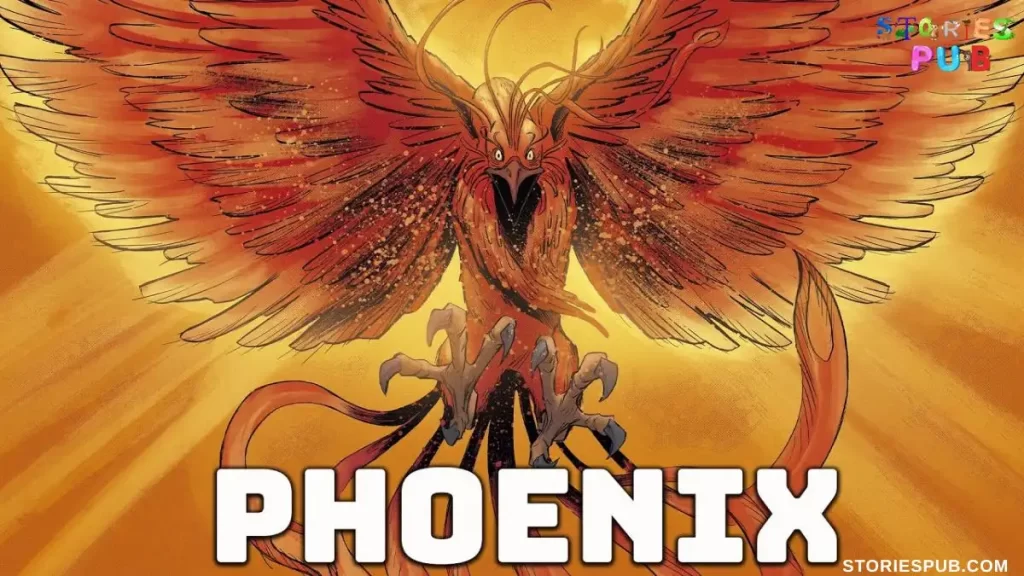
What Does the Phoenix Symbolize?
The phoenix, a mythical creature steeped in rich symbolism, represents several profound themes. It is a powerful symbol of rebirth, renewal, immortality, healing, and the eternal fire.
Depicted as a magnificent bird rising from the ashes, the phoenix embodies the transformative power of overcoming adversity and starting anew. Its symbolism resonates across cultures, inspiring hope and resilience.
In the words of Joseph Campbell, a renowned mythologist:
“The phoenix, hope, and symbol of rebirth, recurs throughout mythology, representing the indomitable spirit of man.”
The phoenix’s association with rebirth and renewal stems from its ability to emerge from the flames of its own funeral pyre. As it rises from the ashes, it symbolizes the cyclical nature of life, signaling the end of one chapter and the beginning of another.
Furthermore, the phoenix embodies the concept of immortality, representing the eternal nature of the human spirit. It serves as a reminder that even in the face of destruction, there is always the possibility of a new beginning.
The phoenix’s healing properties are also widely acknowledged. Its tears are believed to possess potent healing powers, offering solace and renewal to those in need. This symbolism further reinforces its association with rejuvenation and emotional healing.
The eternal fire associated with the phoenix signifies an unquenchable spirit that endures even in the darkest of times. It represents the undying flame of hope, strength, and resilience that guides individuals through challenging circumstances.
Throughout history, the phoenix has captivated cultures worldwide, becoming a timeless emblem of transformation and inspiration. Its mythical attributes and symbolism have been celebrated through various forms of art, literature, and religious texts.
What is a Phoenix?
The phoenix is a mythical bird that holds a prominent place in the world of folklore and legends. Originating in ancient Egypt or the Middle East, the phoenix is often described as a large bird with mesmerizing flame-colored feathers. Its appearance alone is enough to capture the imagination and inspire awe.
The phoenix is deeply symbolic and carries profound meanings across various cultures. It is closely associated with powerful themes such as rebirth, resurrection, and immortality. The bird’s mythical attributes have made it an enduring symbol of hope and transformation.
In many ancient civilizations, the phoenix is believed to rise from its own ashes, symbolizing the cycle of life and renewal. This powerful metaphor of rejuvenation resonates with people seeking to overcome challenges and face adversity.
The phoenix’s connection to the sun and fire further enhances its symbolism. The bird is often associated with the sun, representing light, warmth, and the cycle of day and night. Additionally, fire is a symbol of purification and transformation. The phoenix embodies these elements, embodying the infinite potential to rise above obstacles and emerge stronger.
The rich symbolism and origins of the phoenix have made it an enduring mythical creature. Its presence can be found in various forms of art, literature, and cultural expressions. As different cultures interpret the phoenix in their own unique ways, it continues to captivate hearts and minds with its mystical allure.
Is the Phoenix Bird Real?
Although the phoenix bird is not a real species, it has captivated the minds of many throughout history. Historians believe that the concept of the phoenix was inspired by various historical birds such as the eagle, hawk, crane, flamingo, or peacock.
While there is no scientific evidence to support the existence of the phoenix bird as a living creature, the mythical bird has left its mark in folklore and mythology. The phoenix’s symbolism and attributes have been shaped by cultural beliefs and historical inspiration.
Within the realm of mythology, the phoenix carries a powerful symbolism of rebirth and renewal. Its association with fire and ashes represents the cycle of life and death, signifying the transformative power of time and change.
The Phoenix – Myth and Reality
In ancient times, the phoenix was believed to live for hundreds of years before building a nest and setting it on fire. From the ashes, a new phoenix was born, symbolizing the concept of rebirth and the eternal cycle of life.
“The legend of the phoenix is a testament to the human fascination with immortality and the desire for eternal life, even in the face of mortality.”
While the phoenix bird may not exist in reality, its mythical attributes continue to inspire and resonate with people. Its portrayal as a majestic creature with fiery plumage and the gift of rebirth has made it an enduring symbol in various cultures worldwide.
The historical inspiration behind the phoenix can be seen in ancient artwork and tales that depict similar bird-like creatures. The phoenix, as we know it today, is a culmination of the myths and legends passed down through generations.
Whether the phoenix is real or not, its symbolism remains a timeless reminder of the power of transformation, hope, and the eternal cycle of life.
Etymology of the Name Phoenix
The name “phoenix” has intriguing origins traced back to the ancient Mediterranean people known as the Phoenicians. Interestingly, in Greek, the word “phoenix” refers to a purple-red color, which might allude to the bird’s vibrant and colorful feathers.
Physique of the Phoenix
The Phoenix, a mythical creature of extraordinary beauty, has captivated the human imagination with its striking physical attributes. Descriptions of this legendary bird, although varied across different cultures, consistently emphasize a certain grandeur and vibrancy.
Typically, the Phoenix is depicted as a large bird, akin to an eagle or a peacock in stature and grace. Its feathers are a tapestry of radiant colors, with hues of deep reds, bright oranges, and shimmering golds – a vibrant plumage that seems to capture the very essence of fire and sunlight. The bird’s eyes are often described as piercingly bright, reflecting wisdom and a deep connection to the mystical.
The symbolism behind the Phoenix’s appearance is as profound as its beauty. The fiery colors of its feathers symbolize purification and renewal, akin to the rejuvenating power of flames. The Phoenix’s majestic and regal demeanor represents its association with the sun, embodying the principles of life, energy, and longevity. In many depictions, its shimmering feathers are said to emit a light of their own, signifying enlightenment and spiritual illumination.
Furthermore, the Phoenix’s cyclical life of rising from its ashes has made its appearance a symbol of resilience and rebirth. In art and literature, the image of the Phoenix bursting into flames only to be reborn from its ashes is a powerful metaphor for transformation and the enduring nature of life.
In essence, the Phoenix is not just a mythical creature with a stunning appearance; it is a symbol woven into the fabric of human consciousness. Its vibrant plumage and majestic presence continue to be a source of artistic inspiration and spiritual reflection, embodying the timeless themes of regeneration, immortality, and the eternal cycle of life and death.
The Story of the Phoenix
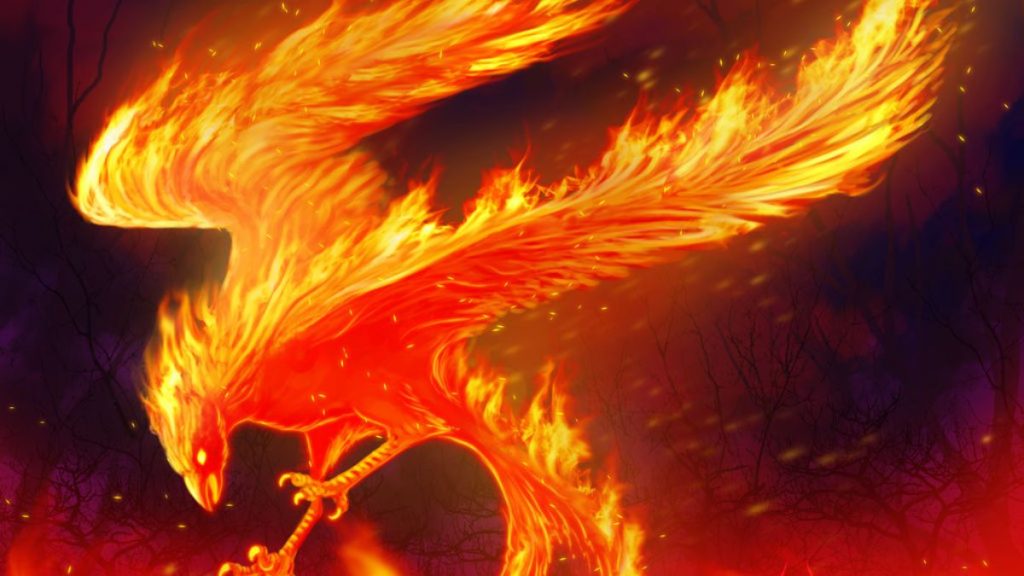
According to legend, the phoenix is a unique bird that lives for hundreds of years before building a nest and setting it on fire. From the ashes, a new phoenix is born, symbolizing rebirth and renewal. As the flames consume the old, a powerful transformation takes place, giving rise to a magnificent creature of hope and resilience. The phoenix’s story is one of strength emerging from adversity, showcasing the healing power of rebirth.
The process of building and burning the nest is a crucial part of the phoenix’s journey. It represents the cycle of life, death, and rebirth—the eternal dance of creation and destruction. The flames that engulf the nest signify the transformative power of fire, purging the old and making way for new beginnings.
But the phoenix’s story goes beyond mere symbolism. It is a tale that resonates deeply with our collective consciousness, reminding us of the cyclical nature of life and the resilience of the human spirit. It teaches us that even in the face of devastation, there is hope for renewal and growth.
“Like a phoenix rising from the ashes, we too have the power to overcome our challenges and emerge stronger than ever,” says renowned mythologist Dr. Amelia Roberts. “The phoenix’s story has always captivated audiences because it speaks to our innate desire for transformation and the belief that healing can arise from even the most dire circumstances.”
“The phoenix’s tears are believed to possess healing powers,” explains Dr. Roberts. “In ancient mythology, these tears were said to have the ability to restore life and heal the wounded. This belief speaks to the profound healing power associated with the phoenix, reinforcing its status as a symbol of transformation and renewal.”
The phoenix’s ashes are another aspect of its story that holds great significance. These ashes contain the essence of the old phoenix, carrying the wisdom, experiences, and memories of its past lives. In various cultures, these ashes are said to possess miraculous properties, capable of bestowing life to the deceased or granting extraordinary powers to those who possess them.
As we delve deeper into the story of the phoenix, we begin to understand its timeless and universal appeal. The tale of resurrection and renewal speaks to the human instinct for survival and the inherent need for healing in times of adversity. It is a story that resonates across cultures, inspiring hope and reminding us of the innate strength that lies within each and every one of us.
Phoenix Mythology
The phoenix bird is a captivating figure in the mythologies of various cultures, including ancient Egypt, Persian mythology, Greek mythology, Ancient Rome, and Judaism and Christianity. Each of these cultures has unique interpretations and stories associated with the phoenix, highlighting its enduring presence in folklore and legends.
Ancient Egypt revered the phoenix as a symbol of renewal and immortality. It was believed that the phoenix would live for hundreds of years before building a nest and setting it ablaze, only to rise from the ashes as a new bird, representing rebirth.
Persian mythology saw the phoenix as a creature of wisdom and purification. Its existence was associated with the ability to bestow insight and enlightenment upon those who encountered it.
In Greek mythology, the phoenix was a symbol of immortality and regeneration. According to the Greeks, the phoenix would cyclically burst into flames and be reborn from its ashes, embodying the eternal cycle of life and death.
Similarly, Ancient Rome perceived the phoenix as a representation of the city’s eternal nature. The Romans associated the bird with the longevity and endurance of their empire.
The phoenix also holds significance in Judaism and Christianity. In Jewish mysticism, the phoenix, known as the Milcham, embodies the concept of spiritual rebirth and restoration. In Christianity, the phoenix symbolizes resurrection and the triumph over death.
Throughout these mythologies, the phoenix embodies themes of transformation, hope, and the eternal cycle of life. Its symbolism has captivated cultures across time and continues to inspire awe and fascination today.
Phoenix Meanings in Different Cultures
The phoenix bird is a powerful symbol that holds different meanings in various cultures. Let’s explore the significance of the phoenix in different mythologies:
In ancient Egypt, the phoenix was associated with the sun god Ra and symbolized renewal and immortality. It represented the cycle of life and death, as the phoenix was believed to die in flames and be reborn from its own ashes.
“The phoenix, associated with the sun, symbolizes renewal, immortality, and the rebirth of the sun.”
In Persian mythology, the phoenix, known as the “Simurgh,” represented wisdom and purification. It was believed to possess great knowledge and bring divine insight to those who sought it.
“The phoenix, known as the Simurgh in Persian mythology, embodies wisdom and serves as a symbol of purification and enlightenment.”
In Greek mythology, the phoenix symbolized immortality and regeneration. It was said to live for centuries before being consumed by fire and rising anew from its own ashes. The phoenix represented the endurance of life and the eternal cycle of death and rebirth.
“According to Greek mythology, the phoenix is a symbol of immortality, representing the cyclical nature of life.”
The Romans saw the phoenix as a symbol of their eternal city. It was believed that Rome would never fall as long as the phoenix endured.
“The phoenix, a symbol of Rome’s eternal city, embodies the enduring spirit and strength of the Roman Empire.”
The phoenix also holds significance in Jewish and Christian symbolism. In Jewish mysticism, the phoenix represents reincarnation and the afterlife. In Christianity, the phoenix is associated with Christ’s resurrection and represents eternal life.
Through its various meanings, the phoenix has captivated different cultures, embodying themes of rebirth, immortality, wisdom, and endurance. Its symbolism continues to inspire and intrigue people around the world.
Mythical Birds in Asia
Asian cultures are rich in mythology and folklore, with various mythical birds that hold deep significance. These legendary creatures bear striking resemblances to the phoenix, embodying their unique symbolism and cultural importance.
Chinese Fèng Huáng
In Chinese culture, one such mythical bird is the Fèng Huáng, also known as the Chinese Phoenix. This majestic creature represents the sun, femininity, and grace. It is often depicted with vibrant plumage in vivid colors, symbolizing prosperity, harmony, and the cyclical nature of life. The Fèng Huáng is believed to bring good fortune and blessings, making it an auspicious symbol in Chinese folklore.
Japanese Hō-ō
In Japanese culture, the Hō-ō, or the Phoenix as it is often called, is a mythical bird associated with good fortune and kingship. It is revered as a symbol of longevity, resilience, and transcendence. According to Japanese legends, the Hō-ō makes its appearance during times of peace and prosperity. It is believed to possess mystical abilities and is often depicted with vibrant feathers of various colors, representing the richness and diversity of life.
“These mythical birds, whether the Fèng Huáng in Chinese culture or the Hō-ō in Japanese culture, hold immense cultural significance and embody the values and aspirations of their respective societies.”
These mythical birds stand as powerful symbols in Asian folklore, reflecting the shared fascination with rebirth, renewal, and the indomitable spirit of these legendary creatures.
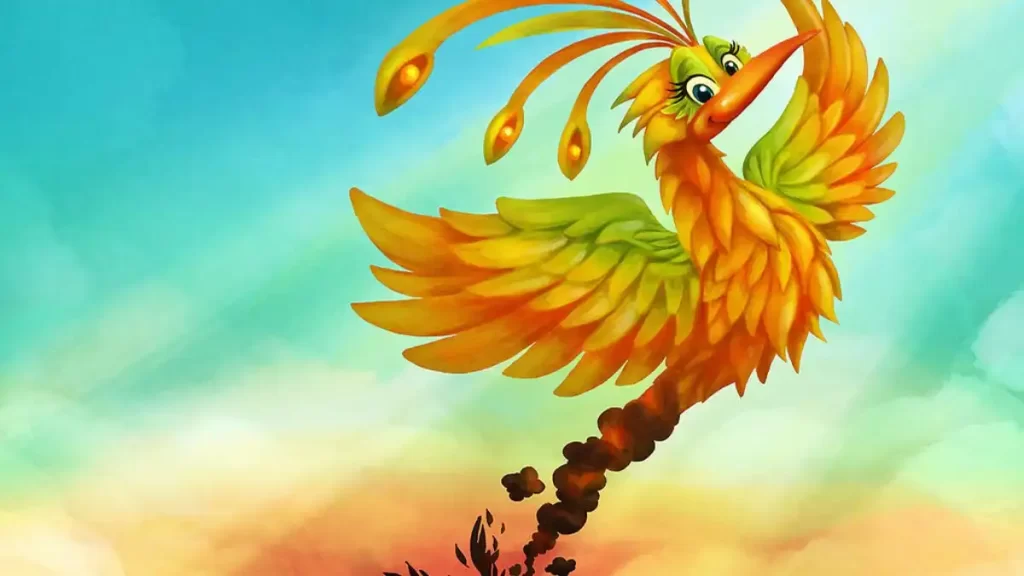
How the City of Phoenix, Arizona Got Its Name
The city of Phoenix, Arizona derives its name from the symbolism and mythology of the phoenix bird. When the city was founded, its name was chosen to embody the idea of rebirth and growth, mirroring the phoenix’s ability to rise from the ashes and start anew. The founders of the city saw parallels between the city’s own transformation and the mythical bird’s legendary powers of regeneration. Hence, the phoenix bird became the official symbol of the city of Phoenix.
The history of Phoenix, Arizona dates back to the 1860s when a group of settlers established a community at the confluence of the Salt River and the Gila River. The area was previously inhabited by indigenous peoples for thousands of years, but the arrival of European settlers brought significant changes and developments to the region.
The decision to name the city after the phoenix bird was a testament to the city’s resilience and potential for growth. Just as the bird symbolized transformation and rebirth, the founders envisioned Phoenix, Arizona as a place that would rise from the ashes of its past and blossom into a thriving metropolis. The choice of the name reflects the city’s rich history and the optimism of its inhabitants.
Today, Phoenix is the capital and largest city of the state of Arizona, known for its warm climate, vibrant culture, and stunning desert landscapes. With its diverse population and thriving economy, the city of Phoenix continues to embody the spirit of rebirth and renewal, living up to its name.
Conclusion
The phoenix bird holds a significant place in human culture, symbolizing rebirth, renewal, immortality, and healing. Its mythology and symbolism have endured throughout history, inspiring countless stories, artwork, and cultural representations.
The phoenix bird’s cultural significance can be found in various mythologies and religions, including ancient Egypt, Persian mythology, Greek mythology, Ancient Rome, Judaism, and Christianity. Each culture has its own unique interpretations and stories associated with the phoenix, showcasing its enduring presence in folklore and legends.
The phoenix’s ability to emerge from its own ashes represents the power of transformation and hope. Its image as an emblem of rebirth and renewal resonates with people across different times and cultures, reminding us of the possibility of overcoming adversity and starting anew.
As a symbol, the phoenix continues to capture our imagination and inspire us with its representation of strength, resilience, and the eternal cycle of life. Whether depicted in ancient myths or modern art, the phoenix remains an enduring and powerful symbol of transformation and the potential for growth.
Hey kids, how much did you like Phoenix Bird Mythological stories with power, weakness, and symbol? Please share your view in the comment box. Also, please share this story with your friends on social media so they can also enjoy it, and for more such stories, please bookmark storiespub.com.
Check out other stories that we have:






